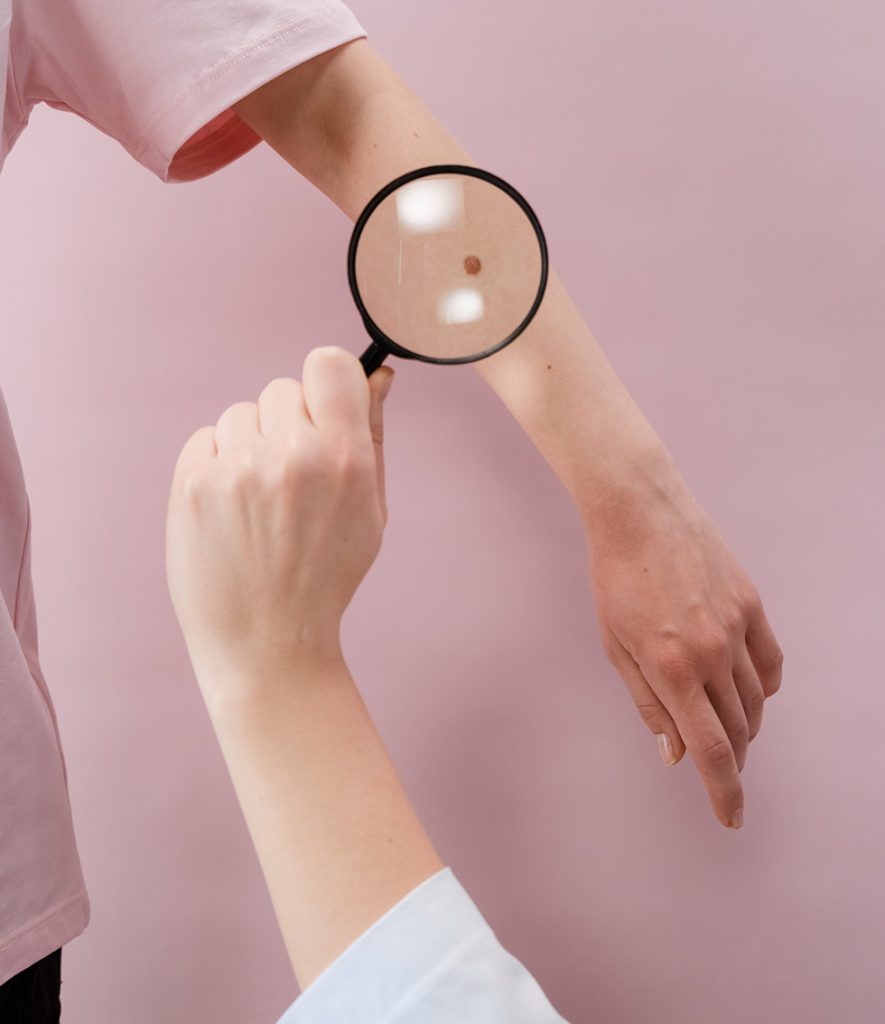Learn about skin cancer risks and prevention methods.
Learn about skin cancer risks and prevention methods.
Blog Article
Navigating Skin Cancer Cells Therapy: The Crucial Duty of Mohs in Modern Dermatology Practices
Skin cancer, a daunting diagnosis, usually leaves clients grappling with many therapy alternatives. As we explore the intricacies of this treatment, one will value its crucial function in skin cancer treatment.
Recognizing Skin Cancer Cells: Types and Threats
Skin cancer cells, a possibly deadly ailment, is far more prevalent than many individuals recognize. This condition, created by the unrestrained growth of irregular skin cells, primarily arises from DNA damages due to direct exposure to the sunlight and ultraviolet (UV) light. There are 3 major types of skin cancer: Basic cell cancer, Squamous cell cancer, and Cancer malignancy. While the former 2 are much less lethal and comprise most of diagnosed cases, cancer malignancy is the most unsafe. It accounts for only concerning 1% of skin cancer cells instances however creates the substantial bulk of skin cancer fatalities - chemical peel. Risk variables consist of reasonable skin, background of sunburn, too much sun direct exposure, living at high elevations or near to the equator, having lots of moles, a household background of skin cancer, and weakened immune system.
What Is Mohs Surgery and How It's Revolutionizing Skin Cancer Treatment
Regardless of the various treatments currently readily available for skin cancer, Mohs surgical procedure attracts attention as a groundbreaking and highly effective remedy. Called after Frederic E. Mohs, the medical professional that established the procedure, Mohs surgical treatment is a specific medical strategy utilized to deal with skin cancer. During the procedure, slim layers of cancer-containing skin are gradually removed and taken a look at until only cancer-free tissue remains. This technique enables the surgeon to validate that all cancer cells have actually been removed at the time of surgery. This level of accuracy, combined with the capacity to spare as much healthy tissue as possible, is transforming skin cancer cells try this web-site therapy. Because of this, Mohs surgical treatment has actually ended up being a keystone of modern dermatology methods.
The Benefits of Mohs Surgical Procedure Over Standard Skin Cancer Cells Therapies
Structure on the ingenious nature of Mohs surgery, it's necessary to consider its countless benefits over traditional skin cancer therapies. Unlike standard operating procedures, Mohs supplies a higher remedy rate, typically getting to 99% for novice therapies and 94% for recurrent cancers cells. This accuracy is due to its distinct approach of progressively getting rid of and analyzing tissue layers until only cancer-free cells continue to be (hair loss). In addition, it lessens damage to healthy and balanced skin, resulting in less scarring and improved aesthetic end results. Mohs also provides prompt outcomes, removing the anxiety-ridden delay usual with other methods. It's affordable, as the surgical treatment and tiny assessment take place simultaneously, getting rid of the demand for additional research laboratory solutions. Hence, Mohs stands for a considerable development in skin-related techniques.
The Treatment of Mohs Surgical Procedure: What to Expect During the Process
:max_bytes(150000):strip_icc()/GettyImages-1154030721-974bcd6d70ff4489ba961317f1f3640f.jpg)
Potential Negative Effects and Post-Operative Care of Mohs Surgical Treatment
Going through Mohs surgical treatment, like any other operation, includes prospective negative effects that clients ought to recognize. Common negative effects include discomfort, bruising, and swelling at the surgical procedure site. These are normally temporary and convenient with over the counter discomfort medication and ice packs. In uncommon instances, individuals might experience infection, blood loss, or an allergy to the regional anesthetic. Post-operative treatment is vital to healing and lessening side impacts. This typically includes keeping the wound tidy and dry, taking proposed drugs, and avoiding difficult activities. Clients must additionally attend all follow-up appointments for wound care and surveillance. In many cases, extra treatments might be needed to make certain total elimination of the cancerous cells. Sticking to these post-operative treatment standards can considerably Get the facts improve recuperation and end results.
Final thought

Report this page